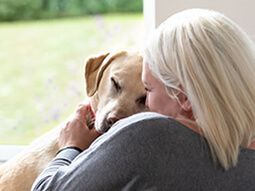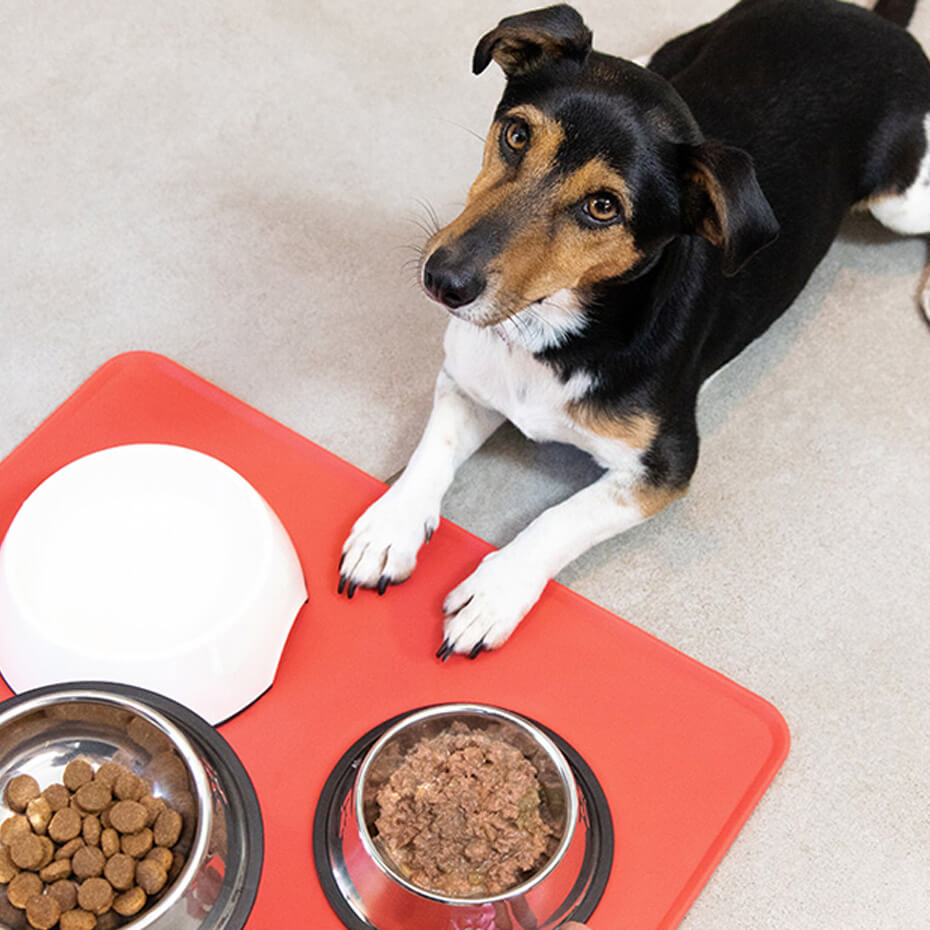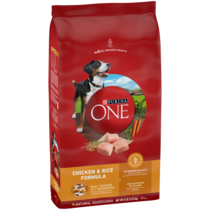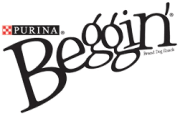
Maintaining an ideal body condition is vital to help reduce the chances of your dog developing weight related conditions that can both be painful for your dog and life shortening. Maintaining a lean body condition for dogs can actually extend their life.
The Purina Canine Lifespan study was the first of its kind. A result of over fourteen years of research, it began when the dogs (48 Labrador retrievers) were just eight weeks. The following conditions and results were observed.
- Dogs were assigned to a control or lean-fed group.
- All the dogs ate the same 100% nutritionally complete and balanced diet for the entire study.
- The control group was allowed to eat an unlimited amount of food during the 15 minute daily feedings.
- Dogs in the lean group were fed 25% less than their littermates. The dogs in the lean group maintained a significantly leaner body condition from six – twelve years of age than the control group.
- In the lean group the median lifespan was increased by 1.8 years or 15 percent vs the control group.
The study proved the significant impact that maintaining a lean body condition has on your dog’s life.
As the obesity levels rise in our pets, overweight and well-covered dogs have become the norm. Interestingly a dog in ideal body condition might be considered by many as too skinny, purely as we have been conditioned to see cute roly-poly puppies and fuller, chubbier dogs as the norm.
It also gets confusing as to how we really check body condition, especially when taking in to consideration different dog breeds. However, it’s absolutely possible to use the same methods no matter the breed as you are focusing on a few key things to assess.
To help you with these methods, Purina has created the body condition chart.
Working out a body condition score can help identify the proportion of fat and lean tissue or muscle.
Underfed
1. Ribs visible, no palpable fat; severe abdominal tuck; lumbar vertebrae and wing of ilia easily palpated.
2. Shared characteristics of BCS 1 and 3.
3. Ribs easily palpable with minimal fat covering; lumbar vertebrae obvious; obvious waist behind ribs; minimal abdominal fat.
4. Shared characteristics of BCS 3 and 5.e
Ideal
5. Well-proportioned; observe waist behind ribs; ribs palpable with slight fat covering; abdominal fat pad minimal.
Overfed
6. Shared characteristics of BCS 5 and 7.
7. Ribs not easily palpated with moderate fat covering; waist poorly discernible; obvious rounding of abdomen; moderate abdominal fat pad.
8. Shared characteristics of BCS 7 and 9.
9. Ribs not palpable under heavy fat cover; heavy fat deposits over lumbar area, face and limbs; distention of abdomen with no waist; extensive abdominal fat deposits.
Checking your dog’s body condition regularly will help to assess whether your dog is getting the right amount of food to maintain the best body condition with an ideal body weight score around 4 or 5.
A dog with an ideal body condition will have:
- An obvious waist behind the ribs when you are looking down on them.
- A tuck in the belly when viewed from the side
- Ribs that are easily felt but not seen – view how you can use your own hand to understand the feel of the ribs.
Just like humans it’s all about diet and exercise, and maintaining the correct body condition is much easier than having to lose weight. Here are some tips to help get your dog back to his optimal health:
- Try not to feed his daily food amount in one serving. Instead evenly spread out his meals to two or three smaller meals. By doing this you’ll help reduce him feeling hungry.
- Always ensure the food is measured rather than just poured into a bowl. It’s also easy to give titbits and leftovers but this can add extra calories so best avoided.
- Treats are a great way of building a relationship with your dog; as rewards during training, or time occupiers while you’re out. Just be careful not to be adding extra calories. Choose treats that are lower in fat.
- Put aside a small amount of their daily healthy weight management food and use these throughout the day to treat them. Also, rather than rewarding with food, give them attention through pats or a tummy rub or a play with their favourite toy.
- Exercise is great for losing or maintaining weight and is an ideal way to increase your bond and enjoyment together. Introduce variety, take toys with you, play fetch with a tennis ball and racket or special tennis ball thrower. It’s important to note that if your dog is older, has had an injury or has arthritis, consult with your vet to determine the best exercise routine.
A good goal is to work on a 2% weight loss per week which will ensure more mobility so you can do more together, greater playfulness, less shortness of breath and a trim and slim profile.














